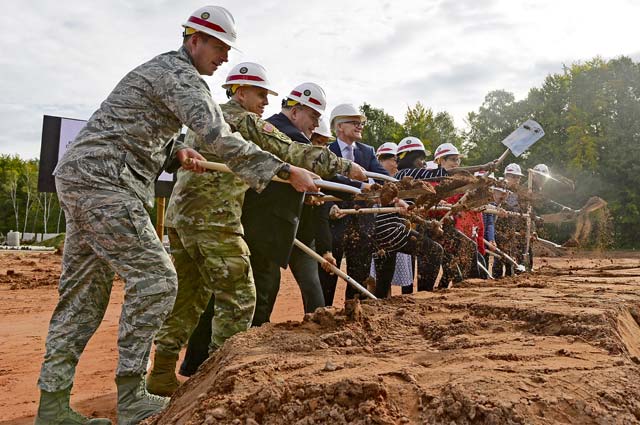
A groundbreaking ceremony for the Kaiserslautern Elementary School’s new campus took place Sept. 29 at Vogelweh.
According to the U.S. Army Corps of Engineers – Europe District, the new facility is designed to be a “21st Century Educational Facility.” The building is expected to include various features such as laboratories, learning studios and music rooms. The corps also stated that the new school building is intended to be a student-centered facility that emphasizes flexibility and adaptability in accordance with different styles of learning.
The ceremony began with speeches from several officials, including the principal of Kaiserslautern Elementary School, Penelope Miller-Smith.
“This groundbreaking is a physical manifestation of several years of planning and preparation,” said Miller-Smith. “Twenty-First Century learning environments address such issues as personal space, resource access, physical comfort, team mobility, flexibility and varying scales of learning spaces and technology.”
Miller-Smith added that the school building is adopting the 21st Century Educational Facility initiative and is one of more than 100 in the Department of Defense School system. She described the initiative as a leap from the traditional school system, saying 21st Century schools center on the learner, and the facilities place emphasis on being able to grow and improve over time.
“Our new building has spaces that are designed to support learning that is self-directing, independent, interdependent, authentically personalized, active … and student-driven,” Miller-Smith said.
The new Kaiserslautern Elementary School facility is expected to be complete by 2020 and is slated to accommodate more than 600 students.
In addition to following the DOD’s push for 21st Century Educational Facilities, the building is also energy-efficient.
According to USACE Europe, some of the school’s energy-saving capabilities are increased natural lighting, CO2 monitoring and the ability to save water with special plumbing fixtures and rainwater cisterns. In all, USACE indicated that the facility is expected to save 36 percent more energy than a baseline U.S. high school.


